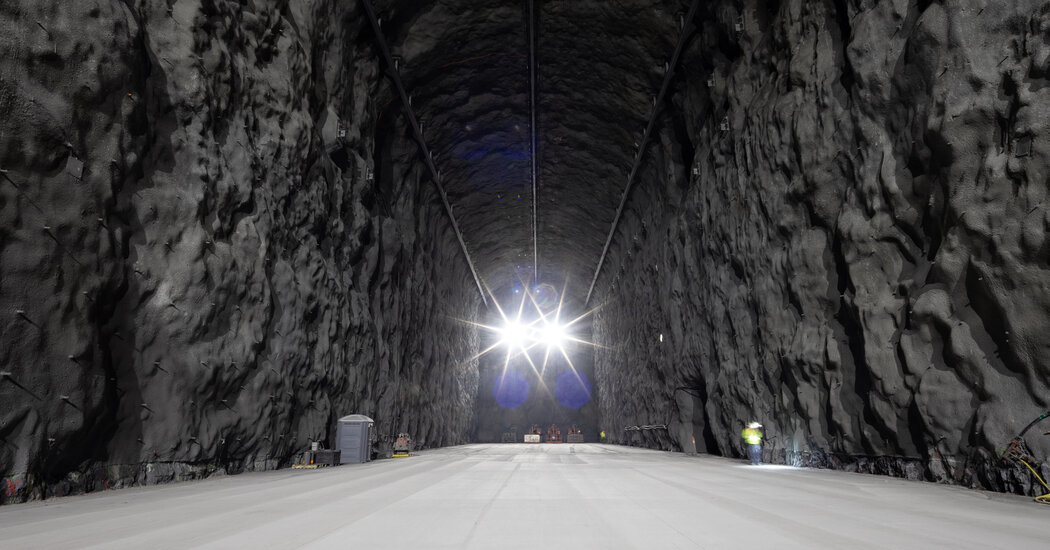Every morning, two dozen miners and engineers pack into a cage-like elevator for an 11-minute descent into the bowels of South Dakota’s Black Hills.
At the bottom, a mile beneath the surface, the cage door lifts and the workers file down a rocky, twisting corridor. At its end lies the result of three years of labor: two empty caverns, each as high as a seven-story building and so long that it takes a full second for your voice to reach the far wall and echo back.
For over a century, these depths were scoured by miners in search of gold. Now they hold the Sanford Underground Research Facility, or SURF. In the coming years, some of the world’s top particle physicists plan to transform this realm into the listening end of an 800-mile, $5 billion tin-can telephone. With it, they hope to hear a whispered answer to an existential question: How did we get here?
The message will be carried by incoming neutrinos — strange, elusive particles that weigh almost nothing and move almost as fast as light. At the telephone’s other end, a half-mile-wide particle accelerator operated by the Fermi National Accelerator Laboratory, just outside Chicago, will create trillions of neutrinos every second in a narrow beam pointed squarely at this cavern. They will sail underground, not through a tunnel but through three states’ worth of solid bedrock.
When the neutrinos arrive, physicists hope, they will finally explain how the Big Bang created ever so slightly more matter than its opposite, antimatter — an excess that constitutes everything in the universe today.
The telephone, officially called the Deep Underground Neutrino Experiment, or DUNE, is the largest science-engineering project beneath American soil in history. It has taken a decade to reach this point and may need another decade before it begins its work. If all goes well, it will turn the squirrelly neutrino into a known quantity, filling a major gap in scientists’ understanding of the universe and, perhaps, return the United States to its former position at the center of particle physics.
